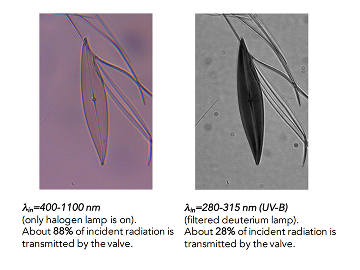Exploring new applications
Diatoms have an outer silica shell that has developed through millions of years of evolution. This has resulted in precise hierarchical structures of mesopores which cannot be synthesized by industrial methods available today.
We are dedicated to find new and innovative applications where silica from diatoms can provide high-performance properties and be a better and more sustainable option compared to other materials. You can read more about some of these applications below. Silica extracted from diatoms have the following properties:
- A large, accessible, surface area – The thin shell geometry covered with mesopores (often around 50nm) provide a large surface area that is accessible for quick adsorption/desorption of molecules and particles. The geometry also allows for good flow properties.
- Highly active surface – Our extraction process is optimized to give a high amount of silanol groups on the materials surface. The silanol-groups help the material to retain water and interact with other molecules. They also provide possibilities for surface modifications.
- Light manipulation – Diatom shells are photonic crystals that will trap and guide visible light. The diatom utilizes these structures to increase the light available for photosynthesis. The material also blocks UV-light. (2024, De Tommasi and 2018, Aguirre)

- Sustainability – By cultivating diatoms and working towards circularity and zero waste, we can produce a sustainable silica material.
Encapsulation and controlled release
Controlled release of active substances is of importance for long-term performance in several different markets, including beauty care, wound care, paints and MedTech. This technology relies on a carrier material that release the active substance over time which should increase the effective usage time of the product while decreasing waste. However, most carrier materials are either fossil-based (polyurethanes, poly-esters etc.) or produced by chemical and energy intensive processes (synthetic mesoporous silica).
Silica from diatoms provide many desirable properties:
- A large and accessible surface area for adsorption/desorption of active substances.
- The mesopores that cover the silica shells are of a homogenous size resulting in a repetitive release pattern.
- A high number of silanol groups provide basis for chemical modification.
- Biocompatibility, high purity, and sustainability.
Catalyst support material
The large mesopores and flat geometry allow for a high loading of noble metal nanoparticles or enzymes that can be used for catalysing reactions. It has been identified that the porous structure of diatom frustules has good flow properties, allowing for fast mass transport of reagents and products in diffusion limited reactions. Together these properties make diatom frustules an interesting material for catalysis. In research this is often combined with the light manipulating properties of diatoms allowing for photocatalysis.
Biofiltration and permeable membranes
Algica® is a pure silica material with a high specific surface area which maximizes molecular availability. The unique, thin geometry with precise pore structure enables rapid separation with minimal tortuosity. The geometry can provide a lightweight yet high-coverage design. Algica® also has an abundance of hydroxyl groups on the surface which allows for strong adsorption and surface modification potential.
Lithium-ion battery anodes
We are a part of the EU-funded project Scalable Sustainable Anodes for Li-ion Batteries by Structural design (SUSTBATT). The project aims to develop scalable sustainable battery anodes using diatom frustules as a sustainable raw material. So far, the project has reached over 800 mAh/g in anode storage capacity. This can be compared with ~370 mAh/g for conventional graphite anodes. The project is managed by the Norwegian university NTNU. Other project partners are SINTEF, LiFeSiZe, Uppsala University, and CSIC.
Increased solar cell efficiency
The diatoms have developed shells with precise, hierarchical patterns of mesopores. These fascinating structures are living examples of photonic crystals that help the algae to trap and guide photosynthetic active light to the chloroplasts. In nature, this property helps the diatom to optimize the energy they can produce through photosynthesis.
Read more about the optical properties of diatoms
The world is in need to transition to renewable sources of energy. In this transition the natural photonic crystals from diatoms can be used as light trapping structures in solar cells, increasing the solar cell’s efficiency. In 2019 a research group at Chalmers University of Technology, Gothenburg University and University of Peradeniya incorporated our material in dye-sensitized solar cells and achieved a 35% efficiency increase and 39% increase of the short circuit current (2020, Bandara). In 2023 the same research group managed to achieve 101% efficiency increase using an optimized way of incorporating the diatom frustules (2023, Bandara).
The use of Algica® for solar cells has been studied in the EU LIFE project.

